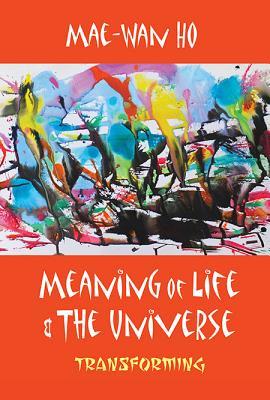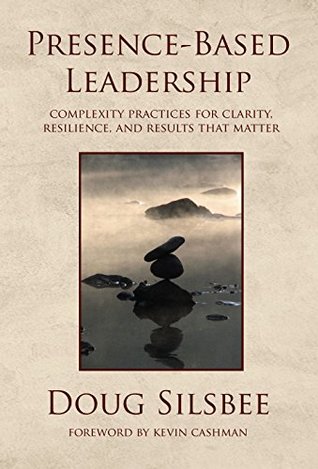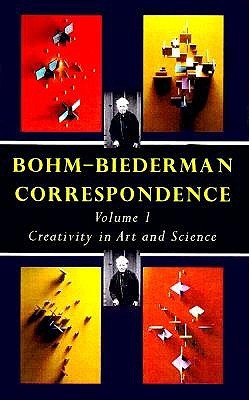This is a retrospective, not of the last week, but of the last month.
New website
I started painting earlier this year and love it! While painting, I move into a state of flow which feels very relaxing, enjoyable, and freeing.
My new website, Jan Höglund Art, is now up and running where I’ll share my art. I’ve also created a new twitter account, @janhoglundart, for art related topics. As usual, I’ll continue to share my reading, book reviews, and learning via @janhoglund.
Looking back at the discovery of my love of painting I’ve asked myself: What if the very nature of inner purpose is that it seeks you? And what if it may only find you when you are still enough?
Reading
Mae-Wan Ho

I mentioned in the previous retrospective that I’ve read Mae-Wan Ho’s Meaning of Life and the Universe. Mae-Wan Ho refers to Alfred North Whitehead who saw the universe encompassing organisms on every scale from elementary particles to galaxies. Whitehead argued that the sensitivity of an organism is necessary to know and understand nature as an organism. He rejected the mechanical laws of classical physics and differential calculus for their failure to describe real processes. Instead of being smooth and infinitely divisible, spacetime is discrete and discontinuous, and hence non-differentiable. Similarly, I think that the sensitivity of an organism—a human being—is necessary to know and understand organizations as organisms.
Douglas Silsbee

I’ve started reading Douglas Silsbee’s Presence-Based Leadership. Presence is an internal state. It means being fully present to whatever is happening. It means staying with and tolerating whatever is showing up. Presence requires us to stay with even what is uncomfortable, so that we can organize ourselves towards what matters, rather than away from discomfort. It’s impossible to overstate the importance of presence when meeting new and complex challenges. Similarly, it’s impossible to overstate the importance of presence in generative organizing.
Presence is how we:
- Stay with whatever is arising in this moment.
- Recognize old habits, allowing new choices.
- Access multiple perspectives.
- Settle our inner state to be calm when the context feels challenging.
- Extend that calm resourcefulness to others.
Michael Jones & John Huss

Michael Jones’ book on Artful Leadership is based on his conversation with John Huss. It’s a book full of wisdom. John Huss says that we need to discover how to sense what is unfolding rather than simply trying to execute a plan. We need fewer planners and more perceivers. The space between exists only in the moment. It cannot be planned in advance. John Huss believes that this way of seeing things offers a more accurate reading of the needs of the situation than a plan or prescription that has been formulated in advance.
Michael Jones is an improvisational pianist and has learned that when he settles for what the memory has to offer, then the music stops as well. So, to attend to the moment, he has learned to devote as much attention to staying in the moment as he does to the mechanics of his craft. If the artist can get the moment right, then his or her ability for perceiving the whole is heightened.
For me, this means asking:
- Is what I am painting leading me to feeling more alive?
- Does what I paint express, in the moment, what feels right and true?
- Does it connect me to the larger sense of the whole picture?
Such questions are answered intuitively rather than intellectually. The question to be asked is not how to make something to happen, but how to work with what is emerging. Sensing what is emerging into awareness helps give form and order to events as they appear, just-in-time. This type of awareness is possible because of resonance. In it, we are perceiving the implicate order. By putting so much emphasis on predictable end points we separate ourselves from this kind of knowing.

Michael Jones writes in The Soul of Place that our leadership has been dominated by machine metaphors and technological language.
It’s a world which is constructed around four commonly held beliefs:
- The first belief is that we cannot trust our inner knowing.
- The second belief is based on the notion of separateness and isolation.
- The third belief is based on the myth of efficiency and control.
- The fourth is that there is not enough to go around.
Our deference to external authority needs to shift to valuing our own internal authenticity.
Ricardo Semler

I’ve read Ricardo Semler’s bestseller Maverick from the 1990s. Here is my review of the book. Ricardo Semler invites us to put quality of all life first! While reading, I was struck by the similarities and differences between Maverick and Sociocracy and wrote this post about it.
Ark Kleiner

I’ve also started reading Art Kleiner’s The Age of Heretics, which is a book from the 1990s too. Art Kleiner wrote more than twenty years ago that our future depends on our ability to transcend the destructive management of the past. The rewards for people of the top of the corporate hierarchy have increased disproportionately since the 1960s, setting a pattern that has continued to this day. The difference in pay between the CEOs of the 350 larges US companies and their employees was 312 times in 2017. By contrast, it was just 20 times in 1965.
David Whyte

I’ve re-read David Whyte’s The Heart Aroused, which is a book I warmly recommend! Here is my book review from 2015. Why have we accepted a work world where what really matters in life has been pushed away?
David Bohm

I’m currently reading the Bohm-Biederman Correspondence edited by Paavo Pylkkänen. Pylkkänen writes that one of the values of the correspondence is that it shows the development of David Bohm’s ideas towards the implicate order. The fact that it’s a correspondence between a physicist and an artist means that the ideas are explained in a clear and simple fashion.
Rutger Bregman

A third book that I’ve started reading is Rutger Bregman’s Utopia for Realist. I noticed with interest that the factory owner Robert Owen championed the emancipation of workers already in the 17th century. Employees were paid a fair wage and corporal punishment was prohibited.
Article
Finally, I happened to read this article about the current wave of protests in Hong Kong. It’s a story about enacting generative organizing and participatory democracy.The movement is leaderless, in the sense that there’s no centralized leadership, so there’s no one to imprison. The lack of centralized leadership is a result of the organic tactics. Volunteers help to announce and coordinate. This encourages everyone to get involved and contribute. The protesters use online forums, vote on the spot, and act accordingly. They have even developed a unique system of hand signals to send messages through the crowd.
Update 2019-09-20:
New blog identity and new twitter username changed.
Leave a Reply
You must be logged in to post a comment.